
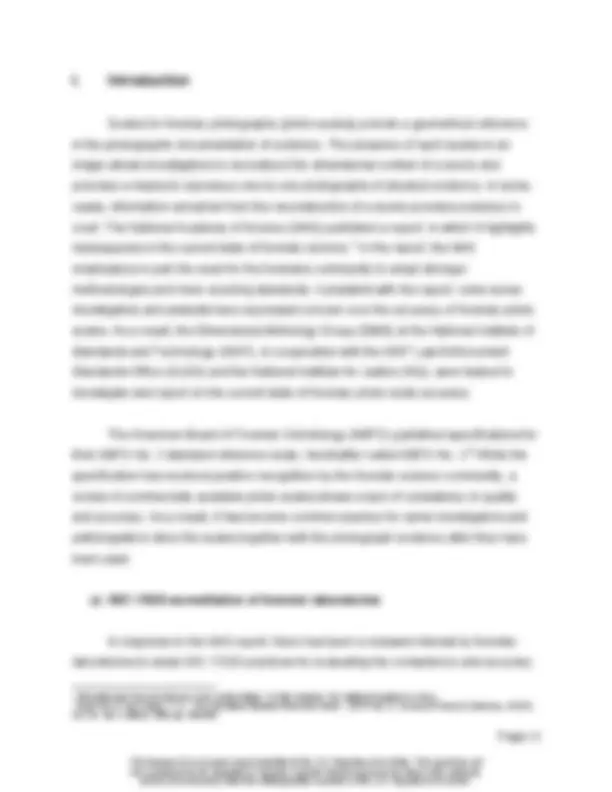
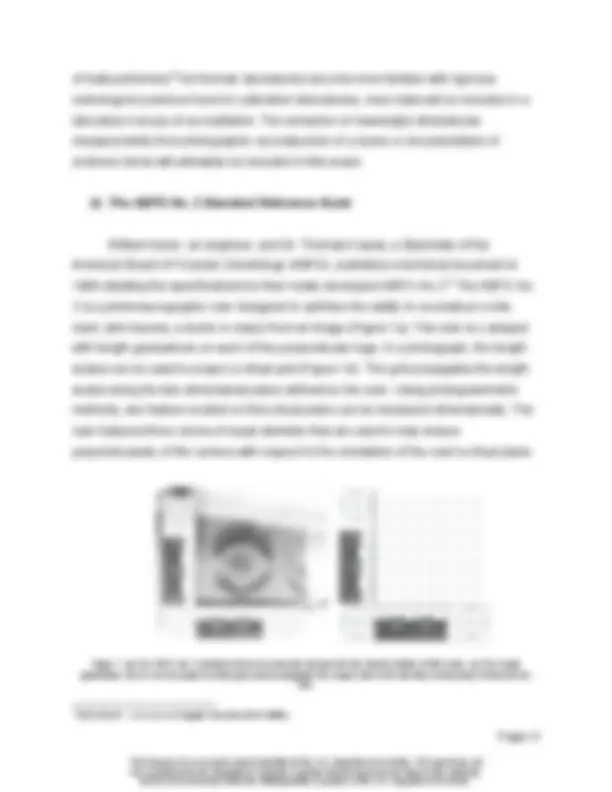
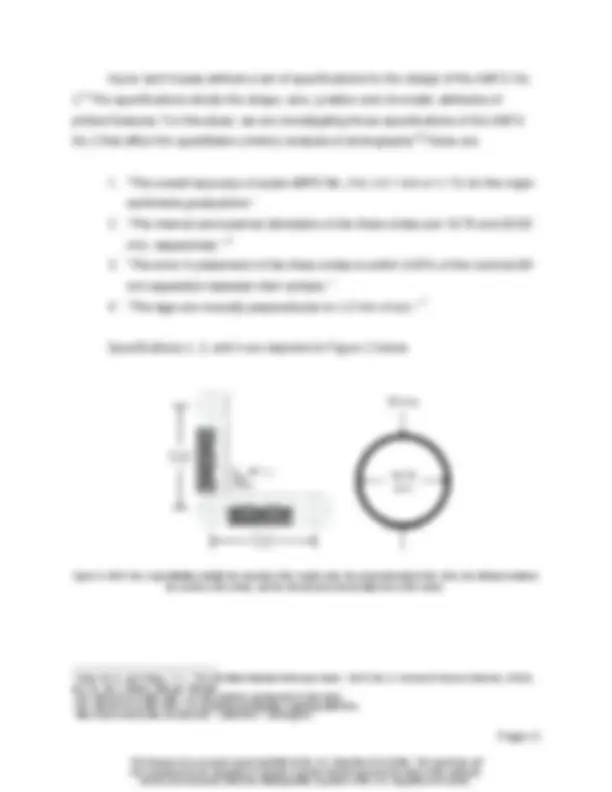
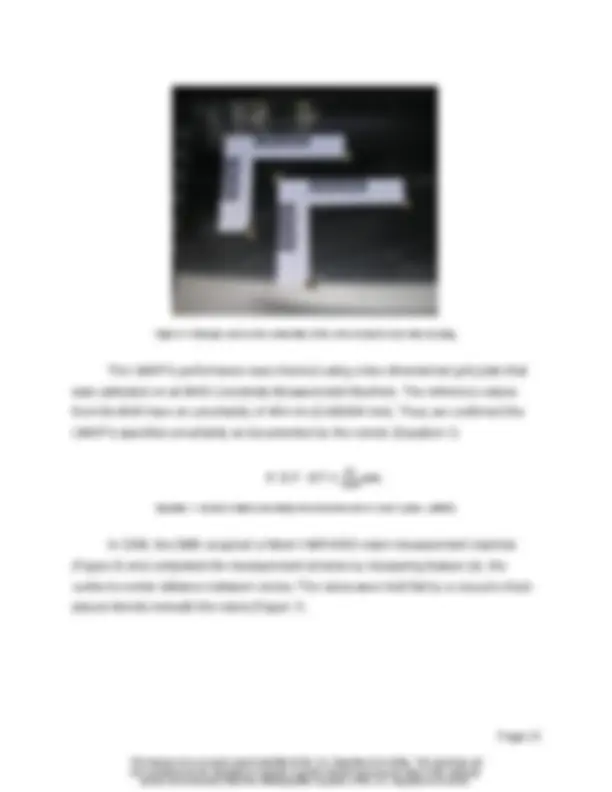
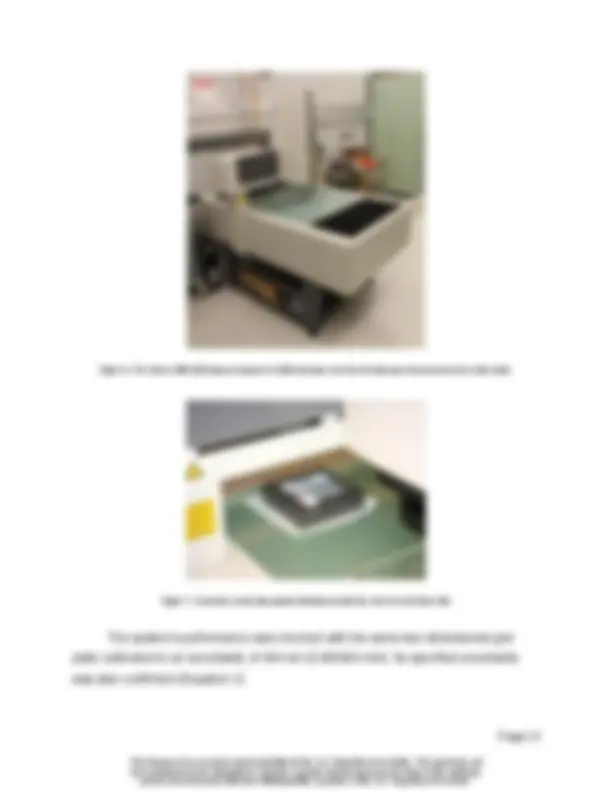
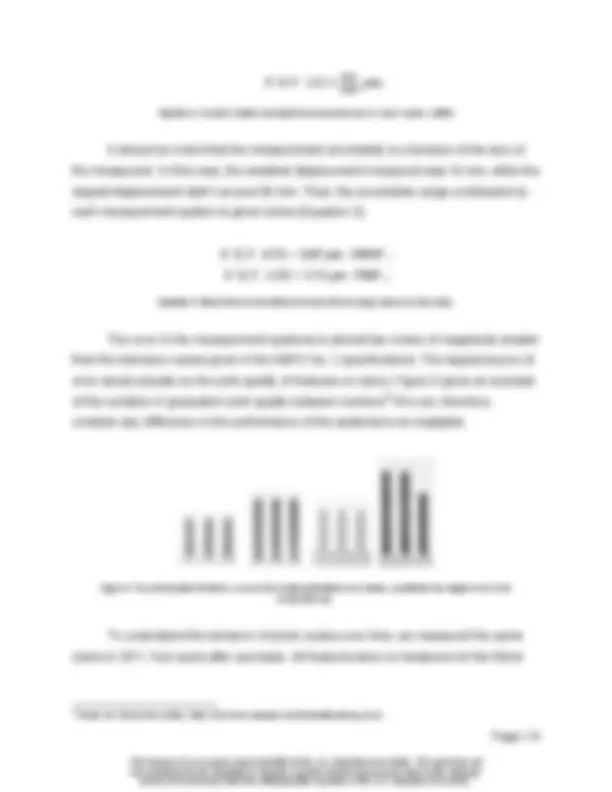
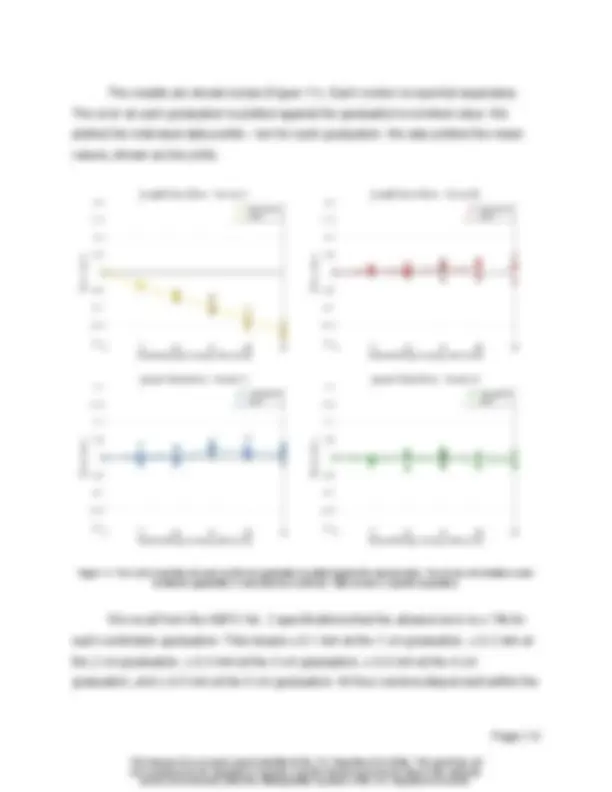
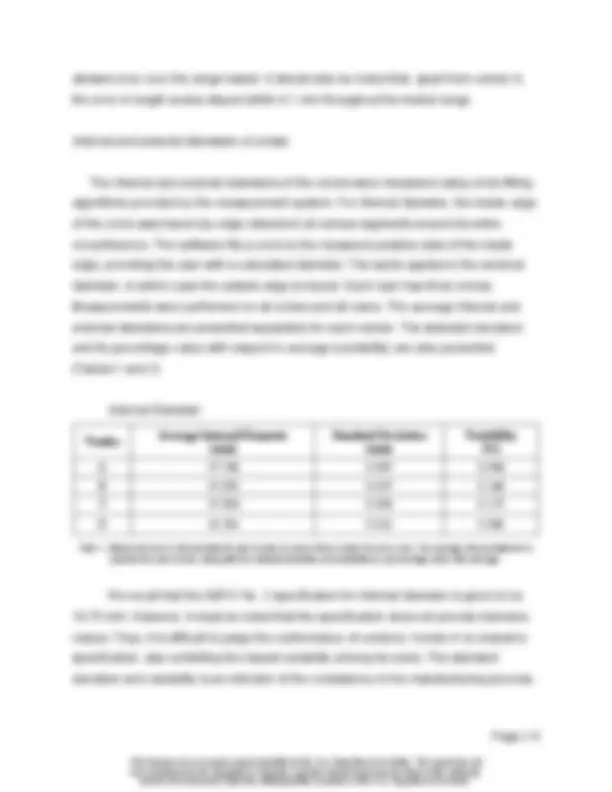
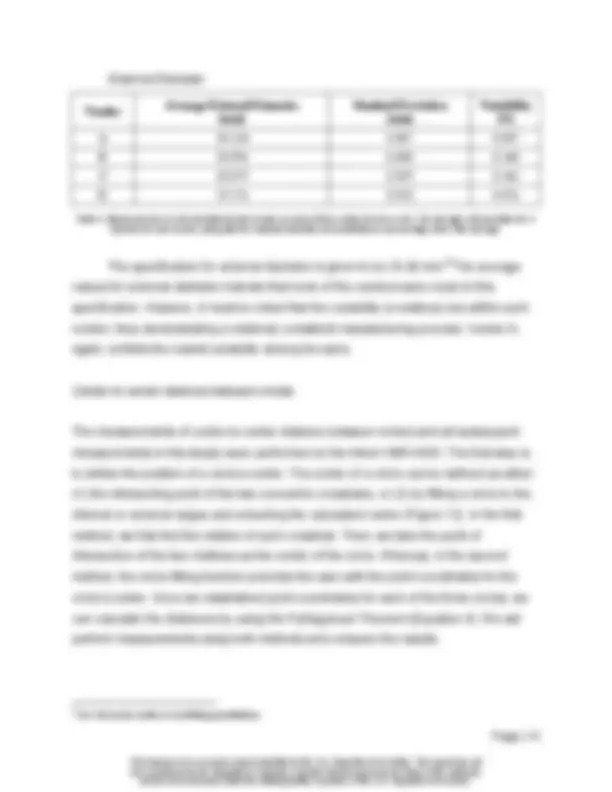
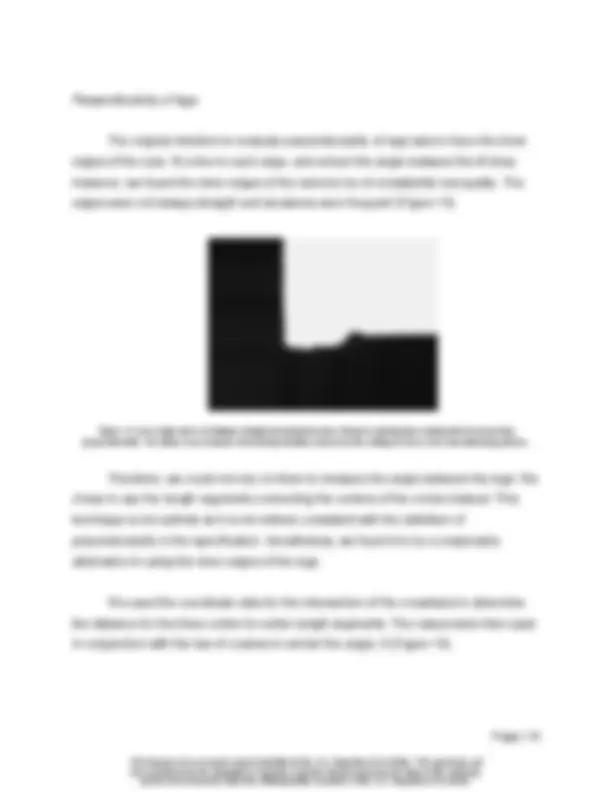
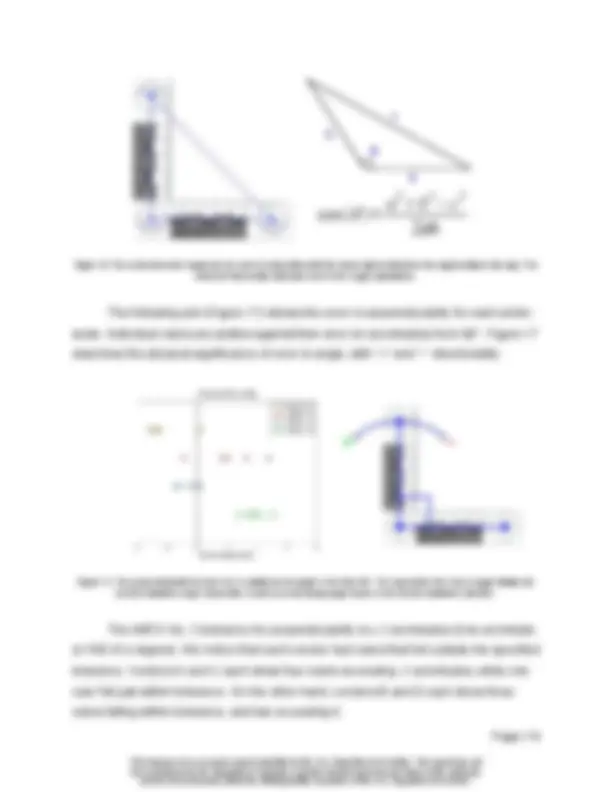
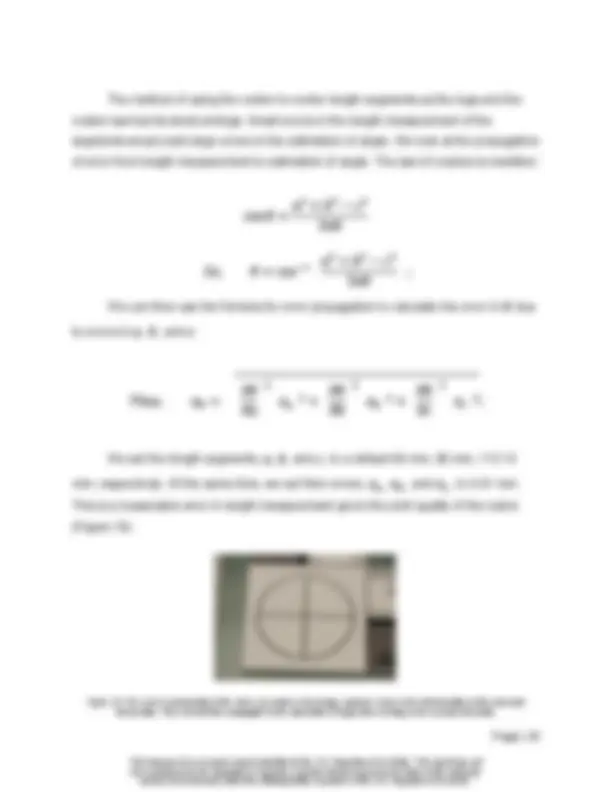
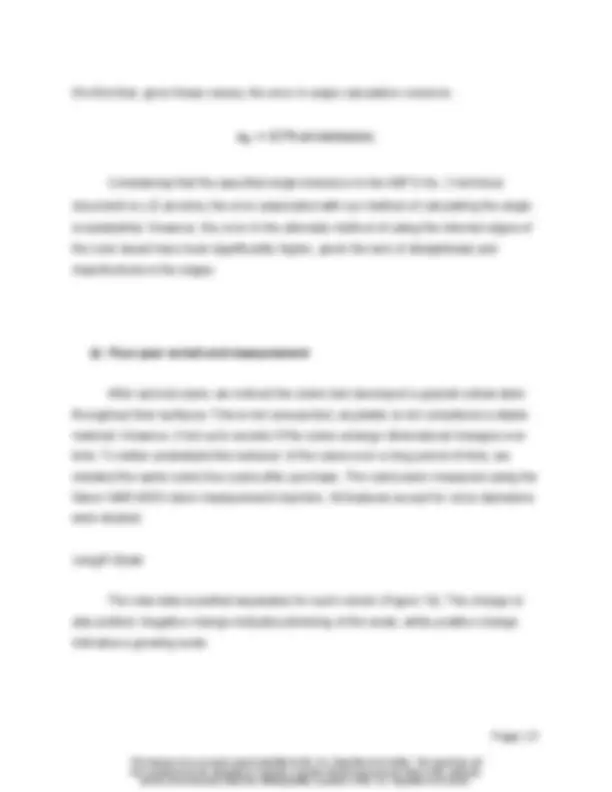
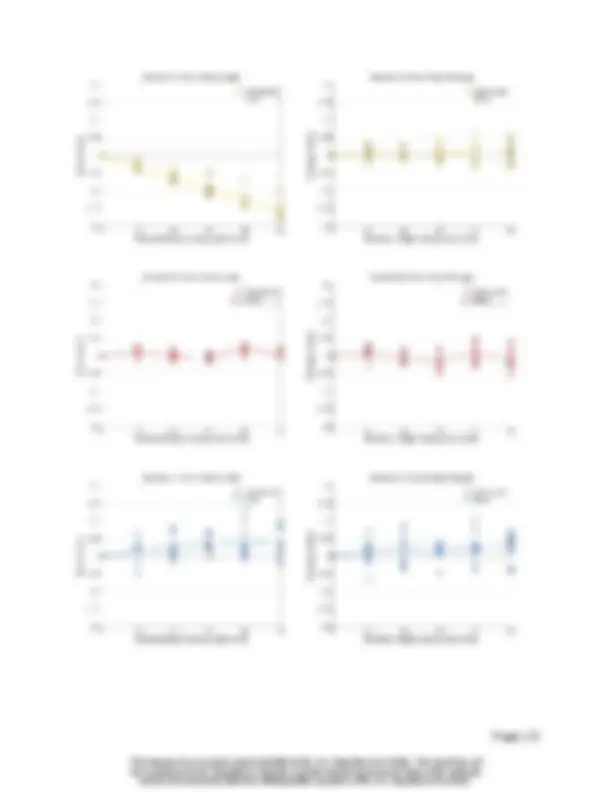
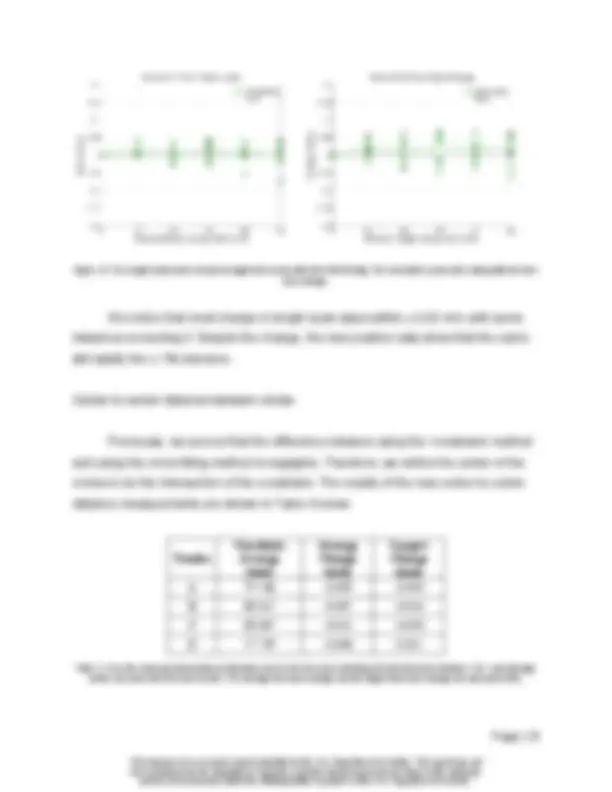
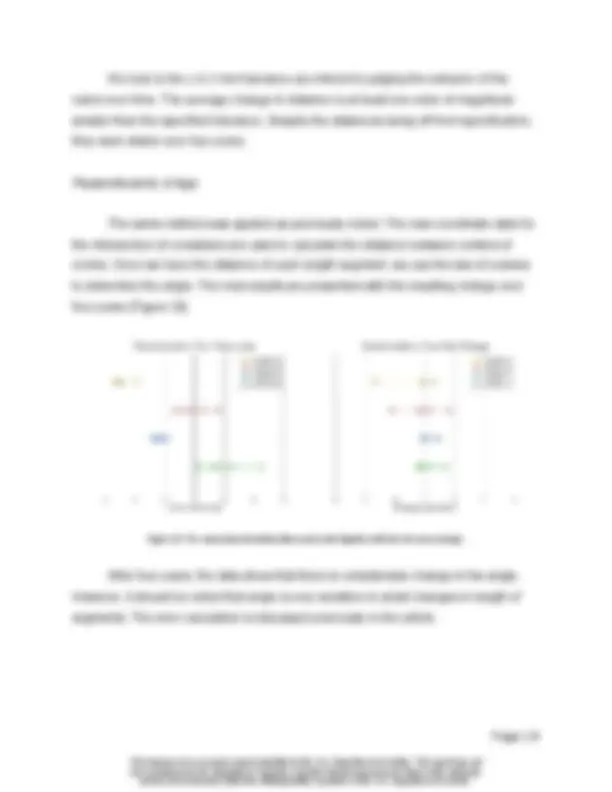
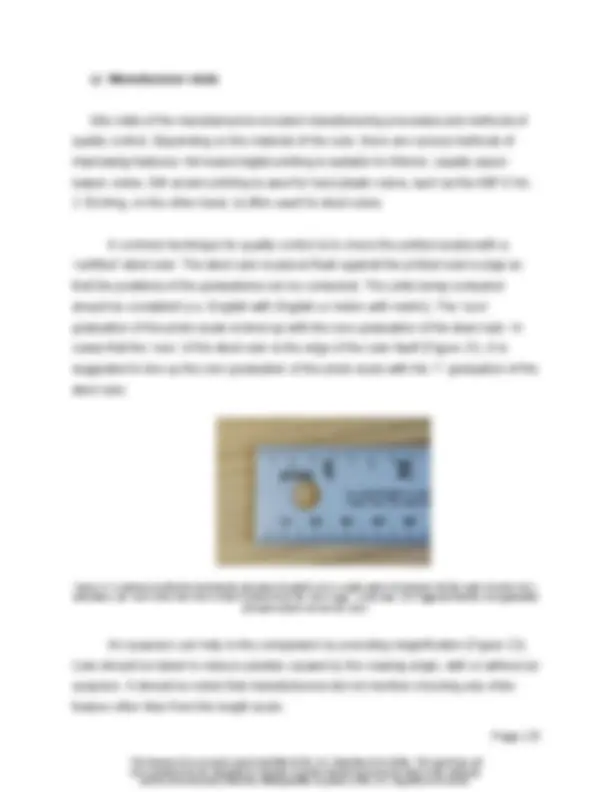
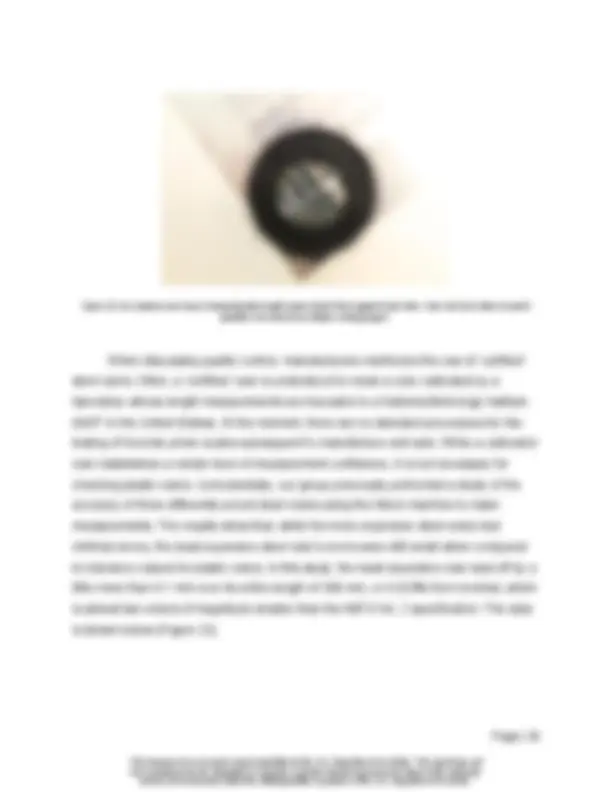
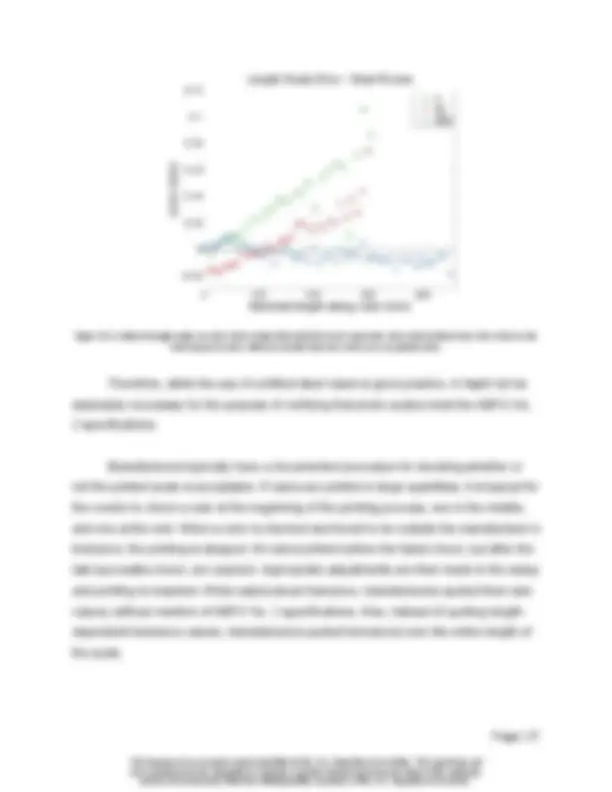
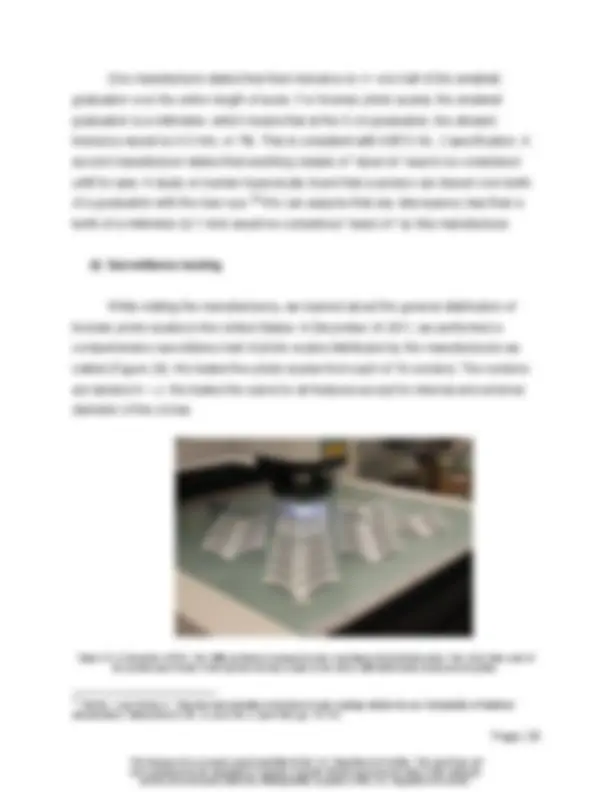
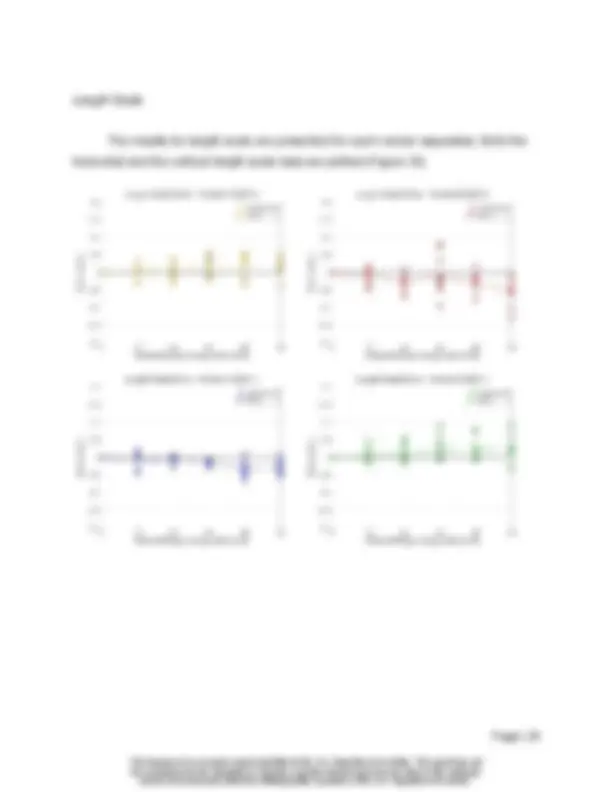
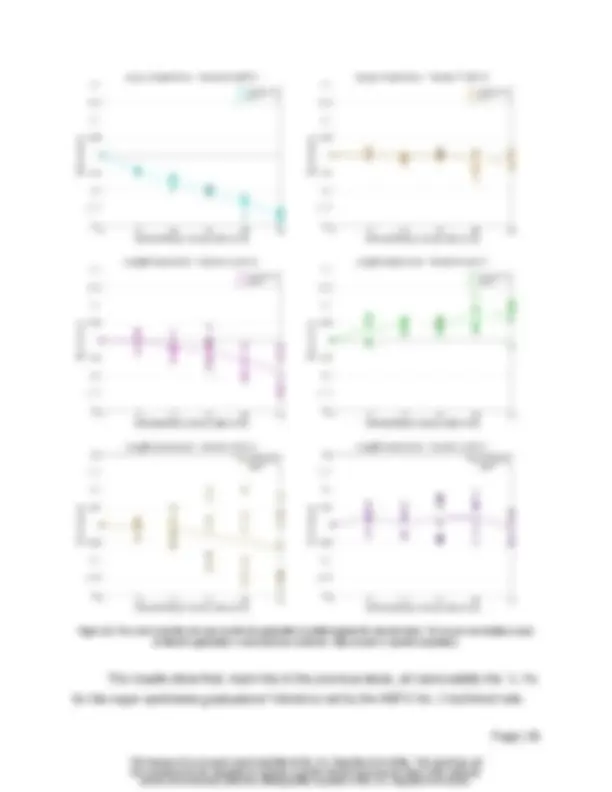
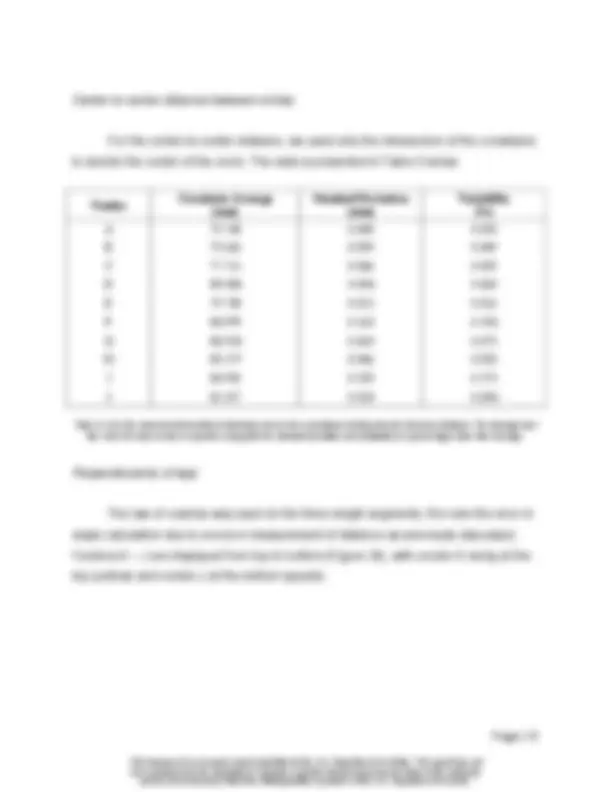
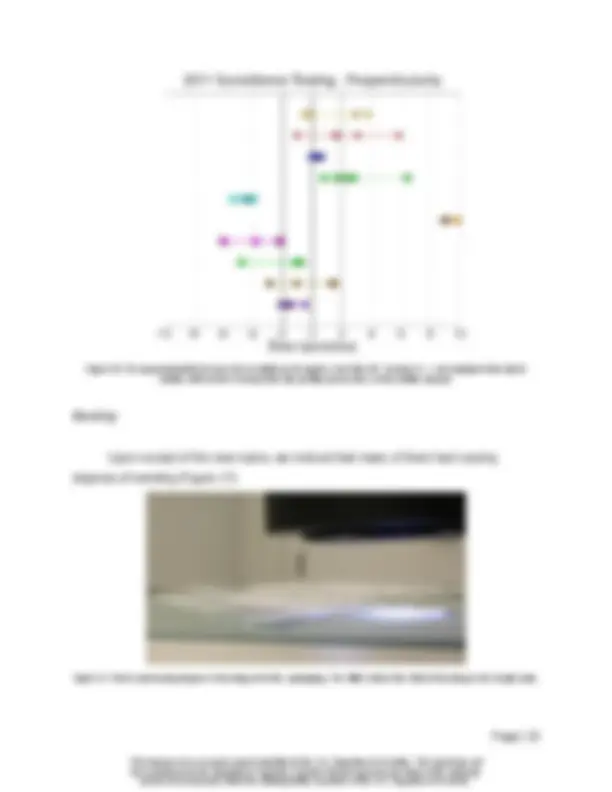
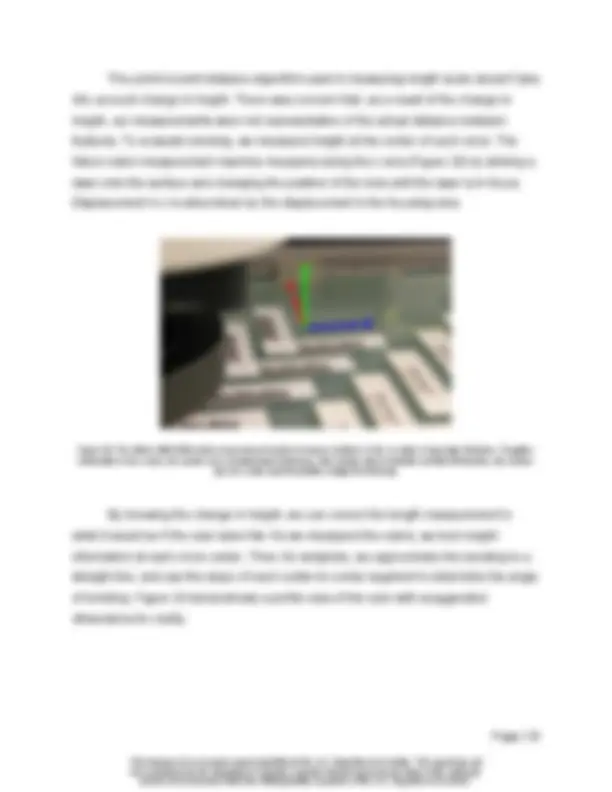
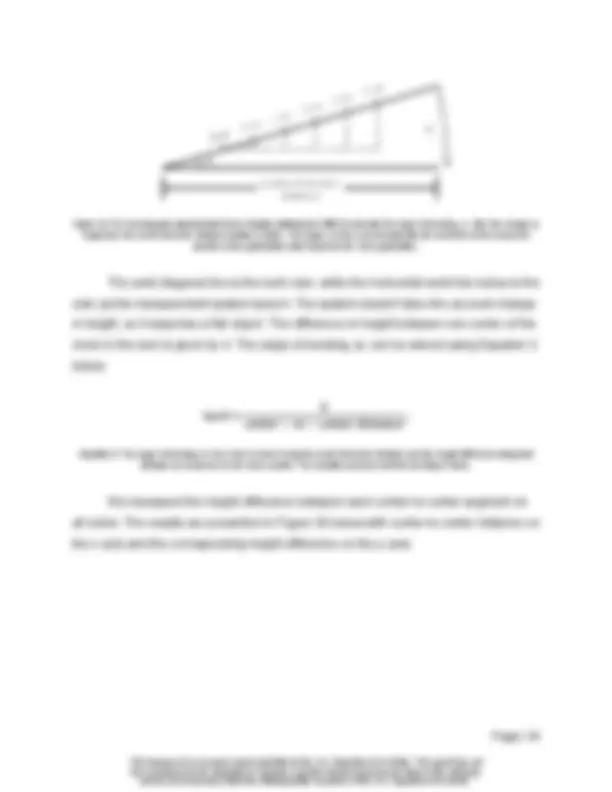
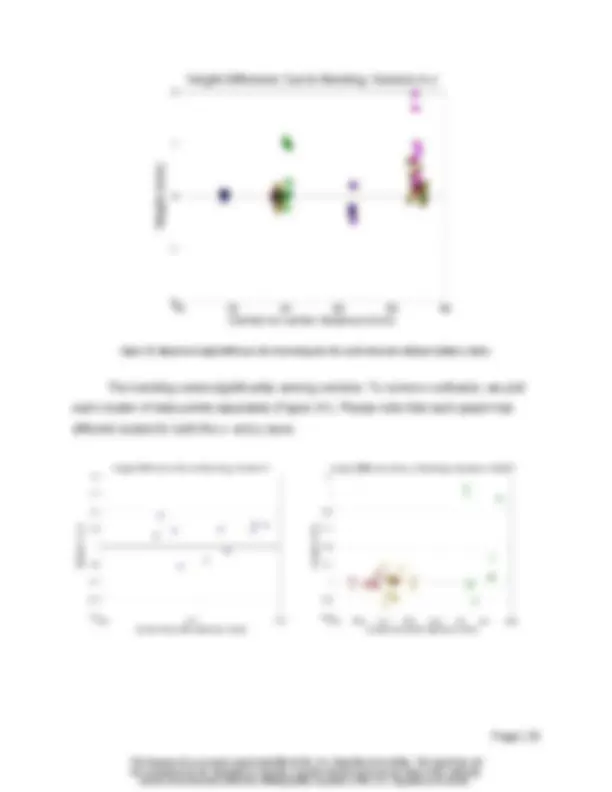
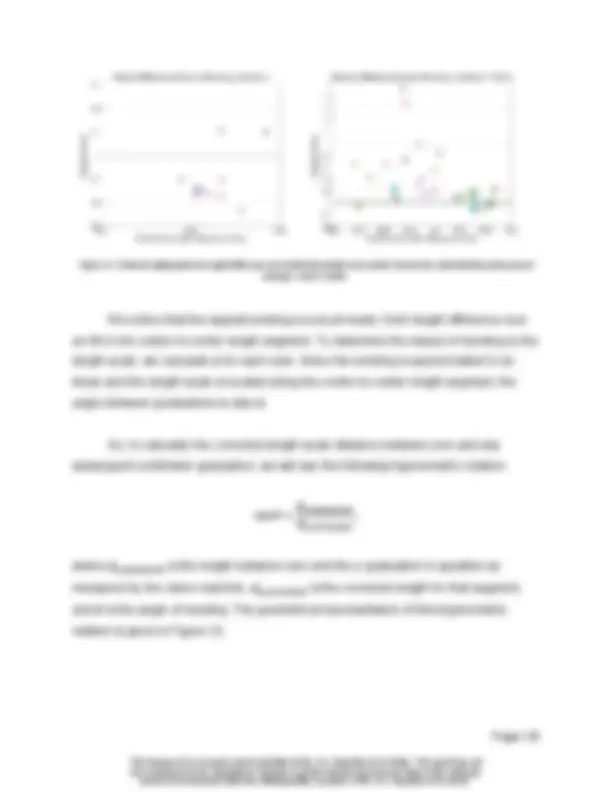
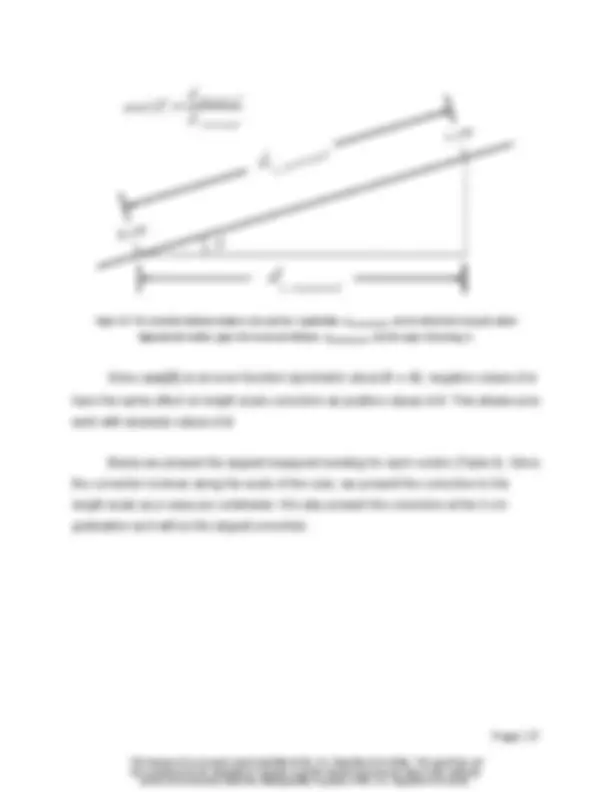
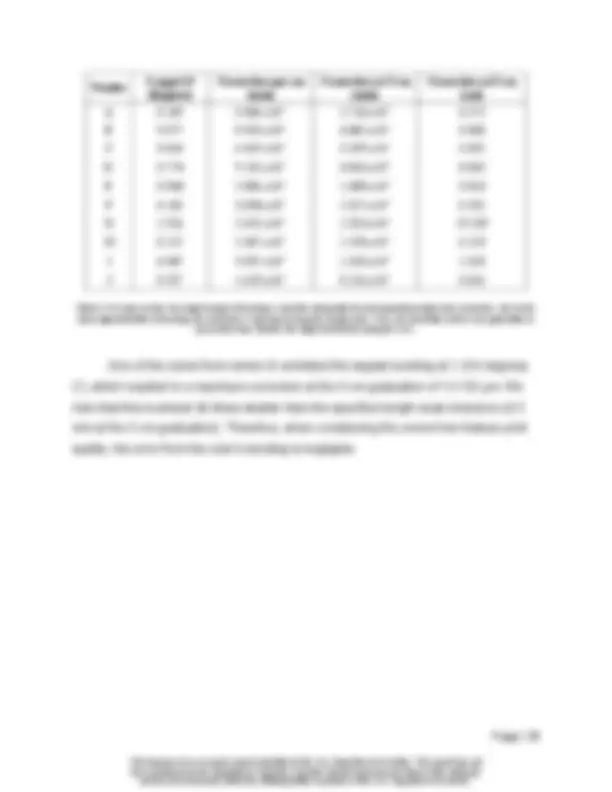
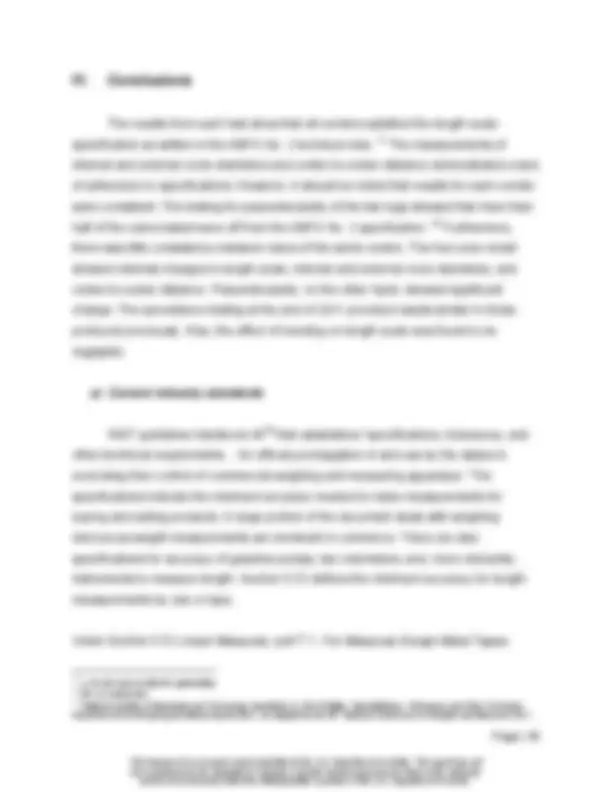
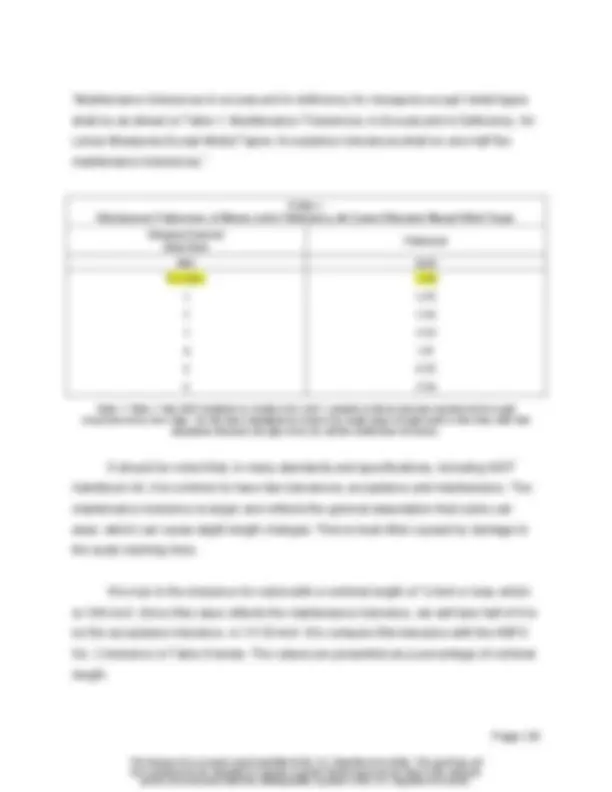
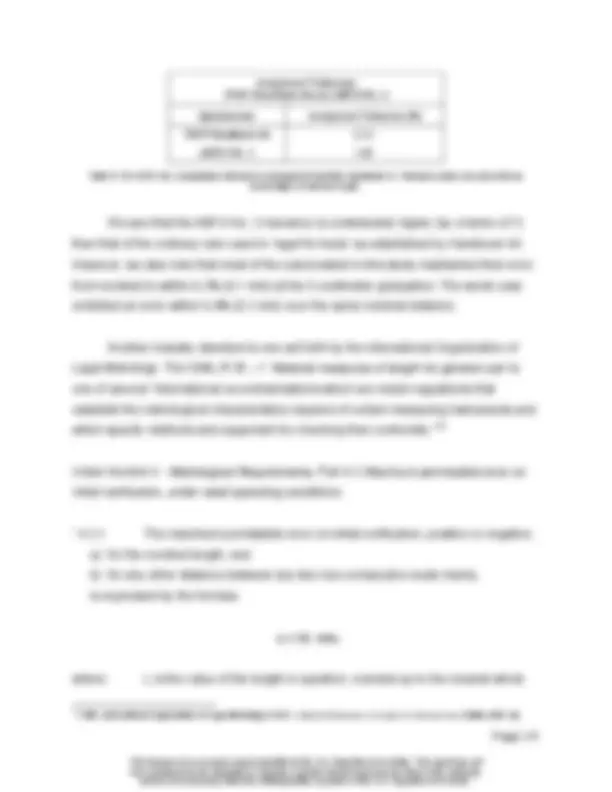

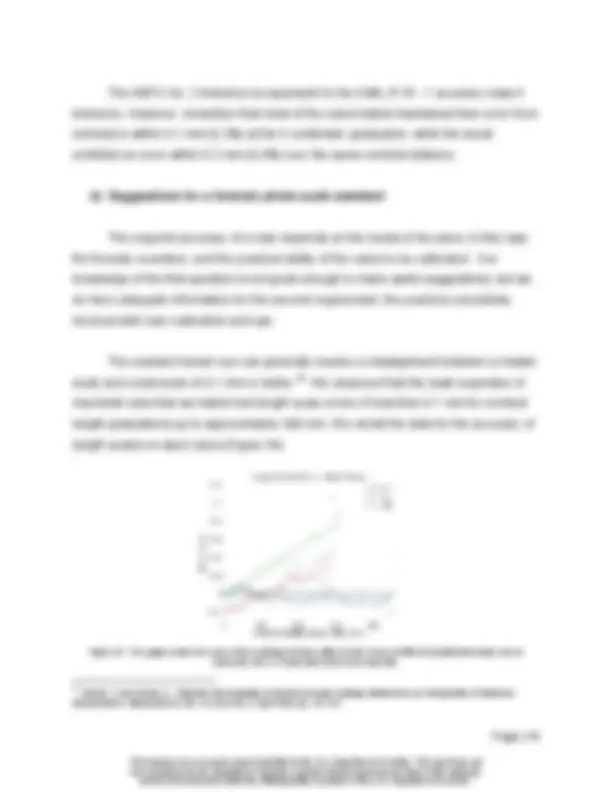
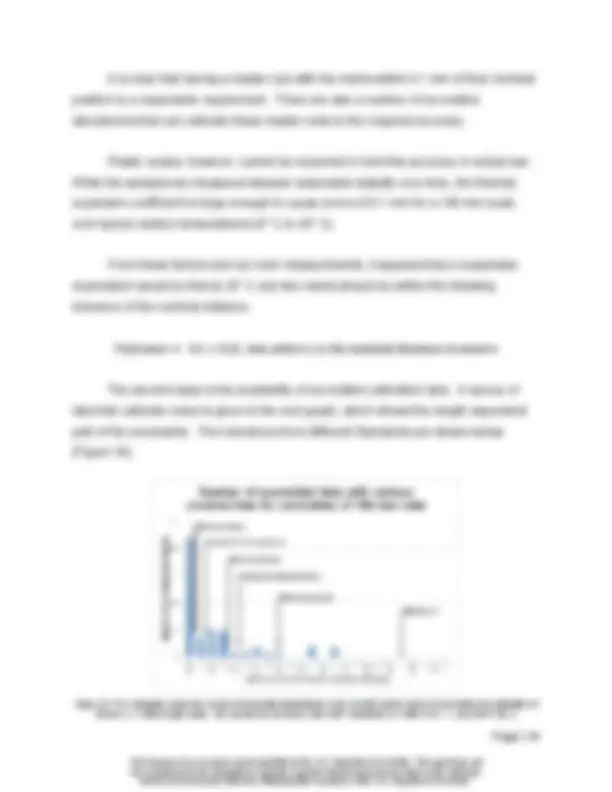
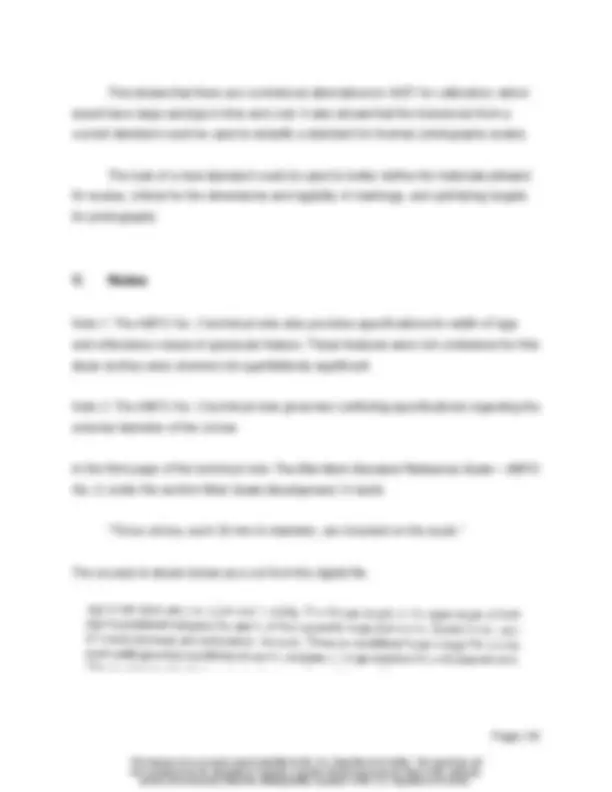
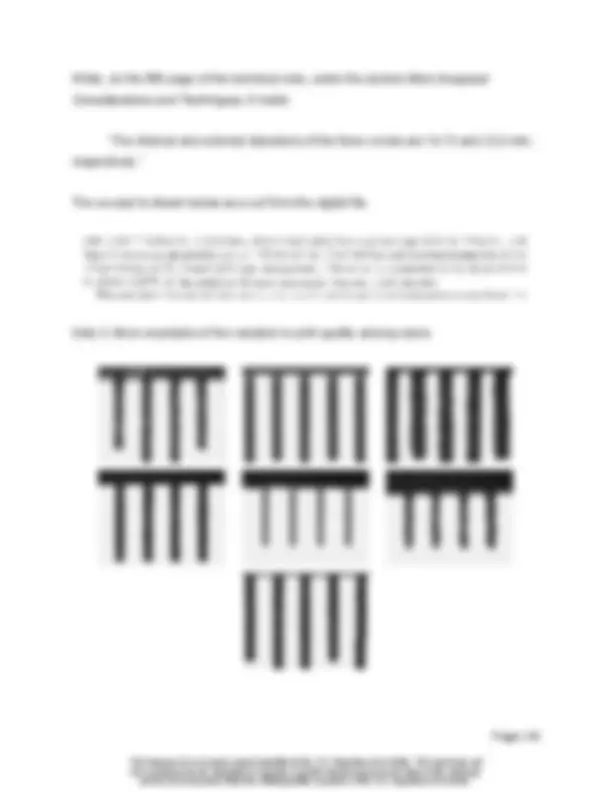
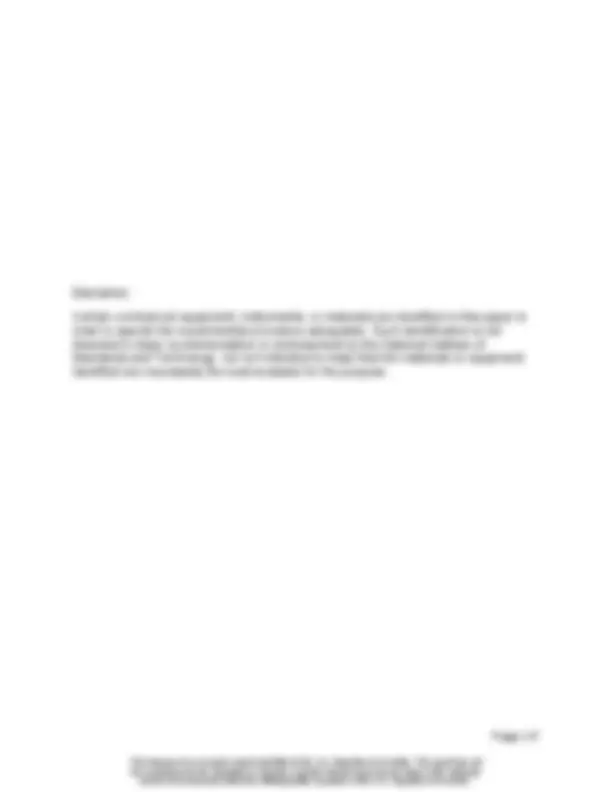


Study with the several resources on Docsity

Earn points by helping other students or get them with a premium plan


Prepare for your exams
Study with the several resources on Docsity

Earn points to download
Earn points by helping other students or get them with a premium plan
Community
Ask the community for help and clear up your study doubts
Discover the best universities in your country according to Docsity users
Free resources
Download our free guides on studying techniques, anxiety management strategies, and thesis advice from Docsity tutors
A common scale used by investigators is a plastic, L- shaped ruler that allows for a dimensional reference in the photographic documentation of evidence or a ...
Typology: Study notes
1 / 47

This page cannot be seen from the preview
Don't miss anything!








































Page | 1
Massimiliano Ferrucci^1 , Theodore D. Doiron^1 , Robert M. Thompson^2 , John P. Jones II^2 , Susan M. Ballou 1^2 , Janice A. Neiman^3 Dimensional Metrology Group, 2 Law Enforcement Standards Office National Institute of Standards and Technology (NIST), 3 University of Delaware
Abstract
Scales for forensic photography provide a geometrical reference in the photographic documentation of evidence. A common scale used by investigators is a plastic, L- shaped ruler that allows for a dimensional reference in the photographic documentation of evidence or a crime scene. The ABFO No. 2 Standard Reference Scale has received recognition by the forensic science community as a reliable and accurate reference scale; however, we have surveyed commercially available scales and found a lack of consistency in manufacturing processes and, consequently a lack of strict adherence to the standard. This study seeks to evaluate the quality of commercially available photo scales, document manufacturing processes, and suggest pathways for establishing standards for forensic photo scales that will serve as a means for ensuring accuracy and user confidence.
This document is a research report submitted to the U.S. Department of Justice. This report has notbeen published by the Department. Opinions or points of view expressed are those of the author(s)
Page | 2
Table of Contents
I. Introduction a. ISO 17025 accreditation of forensic laboratories b. The ABFO No. 2 Standard Reference Scale c. Concerns over accuracy
II. Methods
III. Results a. Initial testing b. Four-year revisit and measurement c. Manufacturer visits d. Surveillance testing
IV. Conclusions a. Current industry standards b. Suggestions for a forensic photo scale standard
V. Notes
This document is a research report submitted to the U.S. Department of Justice. This report has notbeen published by the Department. Opinions or points of view expressed are those of the author(s)
Page | 4
of tests performed.^3 As forensic laboratories become more familiar with rigorous metrological practices found in calibration laboratories, more tests will be included in a laboratory’s scope of accreditation. The extraction of meaningful dimensional measurements from photographic reconstruction of a scene or documentation of evidence items will ultimately be included in this scope.
b) The ABFO No. 2 Standard Reference Scale
William Hyzer, an engineer, and Dr. Thomas Krauss, a Diplomate of the American Board of Forensic Odontology (ABFO), published a technical document in 1988 detailing the specifications for their newly developed ABFO No.2.^2 The ABFO No. 2 is a photomacrographic ruler designed to optimize the ability to reconstruct a bite mark, skin trauma, a scene or object from an image (Figure 1a). The ruler is L-shaped with length graduations on each of the perpendicular legs. In a photograph, the length scales can be used to project a virtual grid (Figure 1b). The grid propagates the length scales along the two-dimensional plane defined by the ruler. Using photogrammetric methods, any feature located on this virtual plane can be measured dimensionally. The ruler features three circles of equal diameter that are used to help ensure perpendicularity of the camera with respect to the orientation of the ruler’s virtual plane.
Figure 1: (a) The ABFO No. 2 standard reference scale was designed for the documentation of bite marks. (b) The length graduations can be used to project a virtual grid, which propagates the length scale to the two-dimensional plane defined by theruler.
(^3) ASCLD/LAB – International Program Overview 2010 Edition
This document is a research report submitted to the U.S. Department of Justice. This report has notbeen published by the Department. Opinions or points of view expressed are those of the author(s)
Page | 5
Hyzer and Krauss defined a set of specifications for the design of the ABFO No.
2.^4 The specifications dictate the shape, size, position and chromatic attributes of printed features. For this study, we are investigating those specifications of the ABFO No.2 that affect the quantitative (metric) analysis of photographs.^5 These are: 1. “The overall accuracy of scale ABFO No. 2 is ± 0.1 mm or ± 1% for the major centimetre graduations .” 2. “The internal and external diameters of the three circles are 19.75 and 23. mm, respectively.” 6 3. “The error in placement of the three circles is within 0.25% of the nominal 80- mm separation between their centers.” 4. “The legs are mutually perpendicular to ± 2 min of arc.” 7
Specifications 2, 3, and 4 are depicted in Figure 2 below.
Figure 2: ABFO No. 2 specifications dictate the accuracy of the length scale, the perpendicularity of the rulers, the distance between the centers of the circles, and the internal and external diameters of the circles.
(^4) Hyzer, W. G. and Krauss, T. C., “The Bite Mark Standard Reference Scale – ABFO No. 2,” Journal of Forensic Sciences, JFSCA, Vol. 33, No. 2, March 1988, pp. 498-506. (^5) See Discussion section Note 1 on other features not observed in this study. (^67) See Discussion section Note 2 on conflicting specifications regarding diameters. Min of arc is also known as arcminute. 1 arcminute = 1/60 degrees.
This document is a research report submitted to the U.S. Department of Justice. This report has notbeen published by the Department. Opinions or points of view expressed are those of the author(s)
Page | 7
The DMG measured dimensional features from a sample of commercially available photo scales, using as criteria the ABFO No. 2 specifications. Five rulers were purchased from each of four vendors. The following features were inspected on each ruler: (a) the accuracy of the horizontal and vertical length scale graduations, (b) the perpendicularity of the legs, (c) the inner and outer diameters of the circles, and (d) the center-to-center distance between circles. Each feature was measured five times and the average value is reported.
Measurements were made on the rulers over several years and on two vision measurement machines. The rulers were purchased in 2007 and were subsequently measured under a Mitutoyo UMAP vision measurement system. The UMAP is equipped with a vision probe capable of edge detection and focusing for coordinate mapping with accuracies of a few micrometers (Figure 4). The rulers were held flat with putty on the extremities (Figure 5) to avoid errors as a result of bending. The DMG used the UMAP to measure features (a) – (c).
Figure 4: The UMAP vision measurement system is equipped with a vision probe capable of edge detection and focusing forcoordinate mapping with accuracies of a few micrometers.
This document is a research report submitted to the U.S. Department of Justice. This report has notbeen published by the Department. Opinions or points of view expressed are those of the author(s)
Page | 8
Figure 5: Putty was used on the extremities of the rulers to avoid errors from bending.
The UMAP’s performance was checked using a two-dimensional grid plate that was calibrated on an M48 Coordinate Measurement Machine. The reference values from the M48 have an uncertainty of 464 nm (0.000464 mm). Thus, we confirmed the UMAP’s specified uncertainty as documented by the vendor (Equation 1).
Equation 1: Vendor’s stated uncertainty for measurements in X and Y plane. (UMAP)
In 2008, the DMG acquired a Nikon VMR-6555 vision measurement machine (Figure 6) and completed the measurement scheme by measuring feature (d), the center-to-center distance between circles. The rulers were held flat by a vacuum chuck placed directly beneath the rulers (Figure 7).
This document is a research report submitted to the U.S. Department of Justice. This report has notbeen published by the Department. Opinions or points of view expressed are those of the author(s)
Page | 10
Equation 2: Vendor’s stated uncertainty for measurements in X and Y plane. (VMR)
It should be noted that the measurement uncertainty is a function of the size of the measurand. In this case, the smallest displacement measured was 10 mm, while the largest displacement didn’t exceed 85 mm. Thus, the uncertainty range contributed by each measurement system is given below (Equation 3).
Equation 3: Measurement uncertainty for measurement range covered in this study.
The error in the measurement systems is almost two orders of magnitude smaller than the tolerance values given in the ABFO No. 2 specifications. The largest source of error would actually be the print quality of features on rulers. Figure 8 gives an example of the variation in graduation print quality between vendors.^8 We can, therefore, consider any difference in the performance of the systems to be negligible.
Figure 8: The print quality of features, such as the length graduations seen above, contributes the largest error in the measurements.
To understand the behavior of photo scales over time, we measured the same rulers in 2011, four years after purchase. All features were re-measured on the Nikon
(^8) Please see Discussion section, Note 3 for more examples of print quality among rulers.
This document is a research report submitted to the U.S. Department of Justice. This report has notbeen published by the Department. Opinions or points of view expressed are those of the author(s)
Page | 11
vision system using the same measurement scheme. The new results are presented and compared to previous data.
The DMG investigated the primary sources of forensic photo scales in the United States and found that the production is limited to only a few manufacturers. Site visits were made to these manufacturers in order to learn how they produce forensic photo scales and how they control the quality of their production. The DMG’s findings are discussed.
Once the production and distribution of forensic photo scales was better understood, an extensive surveillance of a new, larger sample of rulers was performed. The Nikon VMR-6555 vision measurement system was used for this round of testing. The testing scheme for each feature is consistent with previous tests. However, this time the rulers were not held flat so as to allow us to quantify the effect of bending on the quality of the length scale.
a) Initial testing
Length Scales
The accuracy of the scale is determined by the error in position of the length graduations with respect to ‘zero.’ The measured distance between the zero graduation and each subsequent graduation is compared to the nominal distance, and the error is extracted. For example, if the position of the 2 cm graduation is a distance of 2.05 cm from the 0 (zero) cm graduation, then its error is +0.05 cm. We define the position of a graduation as the intersection of its midline and the inner edge of the ruler (Figure 9). The specification states that the accuracy of the scale is “ ± 0.1 mm or ± 1% for the major centimetre graduations .” We understand that to mean that the allowed error between adjacent millimeter graduations is ± 0.1 mm, while the cumulative error at each
This document is a research report submitted to the U.S. Department of Justice. This report has notbeen published by the Department. Opinions or points of view expressed are those of the author(s)
Page | 13
The results are shown below (Figure 11). Each vendor is reported separately. The error at each graduation is plotted against the graduation’s nominal value. We plotted the individual data points – ten for each graduation. We also plotted the mean values, shown as line plots.
Figure 11: The error in position for each centimeter graduation is plotted against its nominal value. The mean error between eachcentimeter graduation is connected by a solid line. Each vendor is reported separately.
We recall from the ABFO No. 2 specifications that the allowed error is ± 1% for each centimeter graduation. This means ± 0.1 mm at the 1 cm graduation, ± 0.2 mm at the 2 cm graduation, ± 0.3 mm at the 3 cm graduation, ± 0.4 mm at the 4 cm graduation, and ± 0.5 mm at the 5 cm graduation. All four vendors stayed well within the
This document is a research report submitted to the U.S. Department of Justice. This report has notbeen published by the Department. Opinions or points of view expressed are those of the author(s)
Page | 14
allowed error over the range tested. It should also be noted that, apart from vendor A, the error in length scales stayed within 0.1 mm throughout the tested range.
Internal and external diameters of circles
The internal and external diameters of the circles were measured using circle-fitting algorithms provided by the measurement system. For internal diameter, the inside edge of the circle was traced (by edge detection) at various segments around its entire circumference. The software fits a circle to the measured position data of the inside edge, providing the user with a calculated diameter. The same applies to the external diameter, in which case the outside edge is traced. Each ruler has three circles. Measurements were performed on all circles and all rulers. The average internal and external diameters are presented separately for each vendor. The standard deviation and its percentage value with respect to average (variability) are also presented. (Tables 1 and 2)
Internal Diameter Vendor Average In (mm)ternal^ Diameter^ Standard Deviation (mm)^ Variability (%) A 19.748 0.009 0. B 19.590 0.029 0. C 19.534 0.034 0. D 18.206 0.016 0. Table 1: Measurements on internal diameter were made on each of three circles for every ruler. The average internal diameter is reported for each vendor, along with the standard deviation and variability as a percentage value from average.
We recall that the ABFO No. 2 specification for internal diameter is given to be 19.75 mm. However, it must be noted that the specification does not provide tolerance values. Thus, it is difficult to judge the conformance of vendors. Vendor A is closest to specification, also exhibiting the lowest variability among its rulers. The standard deviation and variability is an indicator of the consistency in the manufacturing process.
This document is a research report submitted to the U.S. Department of Justice. This report has notbeen published by the Department. Opinions or points of view expressed are those of the author(s)
Page | 16
Equation 4: When the point coordinates are known, the distance can be calculated using the Pythagorean Theorem. Δx and Δy are the displacement in x and y coordinates between circle centers.
Figure 12: The centers are measured by two methods. The first method assumes the center of the circle is given by the intersection of the concentric crosshairs. The second method uses a circle-fitting function on the circumference of the circle to extract its center.
Each ruler has two center-to-center segments (Figure 13). Since the specification is the same for both the horizontal (d1-2) and the vertical (d1-3) segments, we don’t distinguish the two in our results. For each vendor, the average of all distance measurements is presented. The standard deviation and its percentage value with respect to average (variability) are also presented (Table 3).
Figure 13: There are two center-to-center segments on each ruler, d1-2 and d1-3. Both are measured and results are not distinguished.
This document is a research report submitted to the U.S. Department of Justice. This report has notbeen published by the Department. Opinions or points of view expressed are those of the author(s)
Page | 17
Vendor
Crosshairs Average (mm)
Standard Deviation (mm)
Variability (%)
Circle- fitting Average (mm)
Standard Deviation (mm)
Variability (%) A 79.749 0.024 0.031 79.745 0.022 0. B 80.024 0.024 0.030 80.027 0.025 0. C 85.099 0.081 0.095 N/A N/A N/A D 77.763 0.077 0.099 77.767 0.062 0. Table 3: Measurements of center-to-center distance were made using two methods. Each ruler had two center-to-center segments. The average over five rulers for each vendor is reported, along with the standard deviation and variability as a percentage value from average.
We recall that the ABFO No. 2 specification for distance between the centers of the circles is 80 mm ± 0.25% (or ± 0.2 mm). Therefore, any values below 79.8 mm and above 80.2 mm are considered not in conformance. The average values from the ‘crosshair’ and ‘circle-fitting’ method differ by no more than 0.004 mm (4 μm). This is negligible considering that it is in the same order of magnitude as the repeatability of the measurement system. We could not extract circle-fitting data from vendor C since the circumference of the circles had printed obstructions (Figure 14). Hence, we will use the results from the ‘crosshairs’ method.
Figure 14: Circle-fitting was not performed on vendor C rulers since part of the circumference was obstructed by other printed features.
The results indicate that only vendor B satisfies the ABFO No. 2 specification. However, it should be noted that, despite the discrepancy in center-to-center distance between vendors, the variability within each vendor is extremely low (less than 0.1%). As previously mentioned, this indicates a consistent manufacturing process.
This document is a research report submitted to the U.S. Department of Justice. This report has notbeen published by the Department. Opinions or points of view expressed are those of the author(s)
Page | 19
Figure 16: The center-to-center segments are used in conjunction with the cosine law to determine the angle between the legs. The crosshair intersection data was used in the length calculations.
The following plot (Figure 17) shows the error in perpendicularity for each photo scale. Individual rulers are plotted against their error (in arcminutes) from 90°. Figure 17 describes the physical significance of error in angle, with “+” and “-“ directionality.
Figure 17: The perpendicularity for each ruler is plotted as its angle’s error from 90°. The sign before the error in angle follows the counter-clockwise angle convention, in which an increasing angle moves in the counter-clockwise direction.
The ABFO No. 2 tolerance for perpendicularity is ± 2 arcminutes (One arcminute is 1/60 of a degree). We notice that each vendor had rulers that fell outside the specified tolerance. Vendors A and C each show four rulers exceeding -2 arcminutes, while one ruler fell just within tolerance. On the other hand, vendors B and D each show three rulers falling within tolerance, and two exceeding it.
This document is a research report submitted to the U.S. Department of Justice. This report has notbeen published by the Department. Opinions or points of view expressed are those of the author(s)
Page | 20
The method of using the center-to-center length segments as the legs and the cosine law had its shortcomings. Small errors in the length measurement of the segments would yield large errors in the estimation of angle. We look at the propagation of error from length measurement to estimation of angle. The law of cosines is rewritten:
We can then use the formula for error propagation to calculate the error in due
We set the length segments, , , and , to a default 80 mm, 80 mm, 113.
This is a reasonable error in length measurement given the print quality of the rulers (Figure 18).
Figure 18: The error in print quality of the rulers, as shown in this image, produce errors in the determination of the crosshairintersection. This error will then propagate to the calculation of angle when testing a ruler’s perpendicularity.
This document is a research report submitted to the U.S. Department of Justice. This report has notbeen published by the Department. Opinions or points of view expressed are those of the author(s)